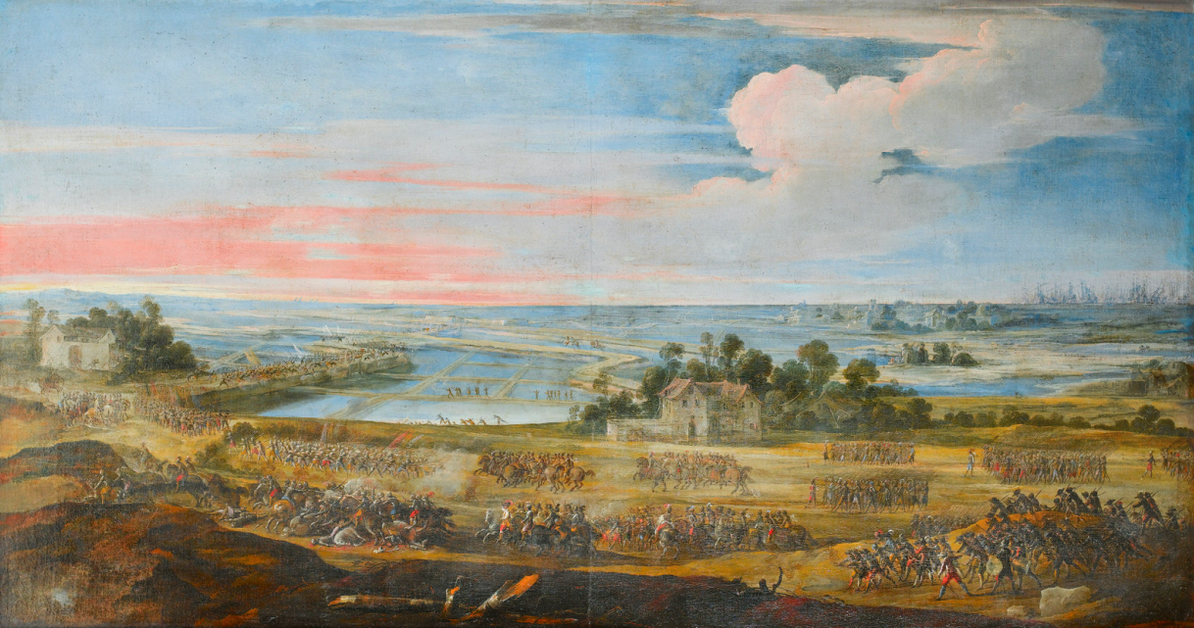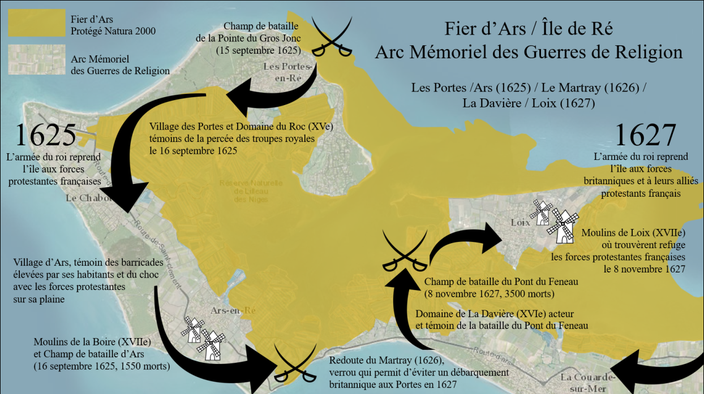potential archaeological excavations to find 3000 english soldiers from Duke of Buckingham's army
link
The Île de Ré Patrimoine association claims to have identified the site where 3,000 soldiers from Buckingham's army lie, who died in 1627 during one of the last wars of religion during the battle of Feneau Bridge, November 8th 1627. The siege of the Île de Ré notably caused the fall of La Rochelle, a large Protestant stronghold.
"We immersed ourselves in the stories of the time and the existing iconography. These elements allowed us to build a sketch and follow it, which was made possible because the topography of the place remained the same," explains Indalecio Alvarez.
A painting by Laurent de La Hyre (1606-1656), recently acquired by the Musée de l'Armée, or the account given by the French historian Jacques Isnard in 1629, served in particular as a basis for this research.
The association has a scientific council, made up of a war historian, an art historian, and an archaeological historian. "Are there skeletons, weapons? and what could they teach us about the art of war? » asks Benjamin Deruelle, professor at the University of Québec in Montréal. According to him, beyond the bodies and buried material, the excavations could reveal the site of the mass graves dug to accommodate the bodies of the 3,000 English and Huguenots who fell in the marshes of La Davière and Feneau. "The project is likely to shed new light not only on the events which led to the defeat of the Protestants of La Rochelle and on military art in the mid-1620s, but also on the processes of affirmation of the sovereignty in Europe," he concludes.


On the English side, this "immense defeat" after a "very costly expedition" will reinforce "the criticism of opponents" of King Charles I and marks "a step" towards the English revolution which temporarily overthrew the monarchy two decades later, says the specialist from the University of Oxford Peter Wilson.
- "Path of the English" – Chemin des Anglais
By combining stories and iconographic sources from the period, including a majestic painting, signed Laurent de la Hyre and exhibited at the Musée de l'Armée, showing a handful of buildings still present today, the association claims to have found the trace of this dike called "Chemin des Anglais", today covered with wild mustards and surrounded by salt marshes.
A "spectacular" discovery because "there is no other place in Europe that witnessed the wars of religion still intact four centuries later", assures one of the founders of the association, Indalecio Alvarez, resident of the island. and AFP journalist.
The project is "followed closely, with interest" by the Department of Charente-Maritime and the association supported by the Nouvelle-Aquitaine Region, seduced by its "heritage and tourist" potential by exhuming "a tragic moment" in History , according to its president Alain Rousset.
Initial surveys are expected in 2025, before potential excavations.
Researchers hope to find bodies of soldiers there, "preserved" from theft of clothes, boots and rifles – common at the time – by falling into the mud, to better understand their "living and hygiene conditions".
The military archaeological sites of the modern era "can be counted on the fingers of one hand" in Europe, according to Mr. Deruelle, who cites the bodies of victims of the retreat from Russia (1812), exhumed in Vilnius in 2002 , or the Vasa ship (1628) in Stockholm which has become a museum.

